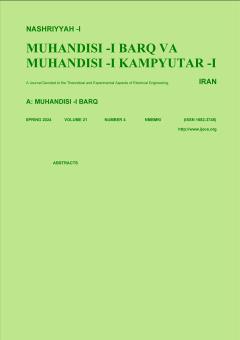Detector Design & Power Allocation of Frequency Diverse Phased Multi Input Multi Output Radar within Nonhomogeneous Environments
Subject Areas : electrical and computer engineeringHamid Reza Fotoohi Firouzabad 1 , Seyed Mehdi Hosseini Andargoli 2 * , Hossein Ghanei Yakhdan 3 , J. Abouei 4
1 - Yazd University
2 - Babol Noshirvani university of technology
3 - Yazd University
4 - Yazd University
Keywords: Phased-colocated MIMO radar, optimal detector design, heterogeneous clutter, power allocation,
Abstract :
In recent years, Phased-Multiple-Input, Multiple-Output radars (PMRs) have attracted great interest. PMR can combine the advantages of both MIMO radar and phased array radar. Here, PMR transmits orthogonal signals from all subarrays to provide both waveform frequency diversity and high coherent processing gain. In this paper dealt with detector design in the presence of heterogeneous clutter based on the unknown scattering coefficients for PMR. Then, detection probability and false-alarm probability are computed based on the derived optimum detector. At the end, the power allocation problem is investigated analytically. The numerical simulations show that obtained optimal detector is joint spatial-temporal filter, which, the clutters are effectively weakened in PMR. Furthermore, simulation results illustrate that proposed power allocation algorithm improve detection performance of PMR in comparison with PR and equal power PMR.

